 Abengoa
Abengoa
Annual Report 2011
- Activities
- Activities
- Industrial Production
- Our Activities
Biofuels
Abengoa remains a benchmark company in the development of new technologies geared towards the production of biofuels and bio-based chemicals and the sustainability of raw materials, channeling to such end a tremendous amount of resources into research. In addition, its trading division means that the company is a service provider capable of offering global solutions, with an impressive capacity for marketing and managing commodities, reliably backed by its global production and raw material procurement capacities and highly efficient operations – cornerstones that afford reliability and critical mass, which are key to optimum business development.
Abengoa’s winning combination of international marketing capacities with cellulosic bioethanol technology, coupled with agricultural, productive and local marketing capacities, gives rise to key synergies that will enable the company to post significant growth in the global ethanol market while obtaining the technology to cut the cost per liter of ethanol.
Abengoa contributes to sustainable development in the area of biofuels by marketing fuel compounds obtained from renewable sources (biofuels) through the use of environmentally friendly technologies that help to bring about a net reduction in polluting emissions, for use in both public transportation and private vehicles.
Also, the company creates new opportunities for sustainable rural development by providing incentives for energy crops and the creation of farming industries, thus helping to maintain employment and income levels in rural areas.
Bioethanol and biodiesel are renewable and clean energy sources which, for some time now, have proved to be a reliable and credible replacement for gasoline and diesel fuel in vehicle engines, while also helping to diversify and improve the security of the energy supply. Their use, either in a pure state or blended with fossil fuels, reduces CO2 emissions, slows down climate change, and reduces the emission of polluting agents into the environment.
The company’s activities in biofuels can be grouped into six main areas:
- Procurement of raw materials.
- Bioethanol origination.
- Production.
- Bioethanol, DGS and sugar trading.
- Cogeneration
- New technologies.
Procurement of raw materials
One of the driving forces behind the positive business results reported by the bioenergy business unit is the procurement of raw materials for producing biofuels.
As it currently stands, the most important grain cereals for the production of bioethanol at Abengoa’s plants are wheat, barley, corn and sorghum, not only due to their alcohol yield, but also their significant protein yield, highly valued in the livestock feed sector (DGS). For biodiesel production, the most frequently used oils are soybean and palm.
Since operations began, Abengoa has managed to build up a wealth of experience in both the supply and logistics of commodities. It has displayed great prowess and versatility both on the international stage and when purchasing within the domestic market, and has also secured direct supply agreements with farmers, thus ensuring that the group’s plants have the volume of materials they require. Similarly, the company has in-depth knowledge of all applicable rules and regulations governing operations in the European Union and North America.
In Brazil, Abengoa grows sugarcane while ensuring sustainable rural development, biodiversity and regional economic growth ensuring that the company’s production plants are properly supplied by signing contracts with landowners, carrying out the necessary work for combined use of the land, and with farmers, by providing the necessary resources and advice in order start up production.
Abengoa has developed internal capabilities enabling it to diversify raw material procurement for its 2G plant in Hugoton. The plant will supply itself with agricultural wastes having no present value for farmers and other energy crops growing in hitherto untended marginal areas.
Bioethanol origination
In addition to Abengoa’s bioethanol production capacity, which is marketed by the trading companies, the latter also carry out bioethanol origination from third-party producers to add this product to the pool, thus allowing for greater flexibility and competitiveness in terms of the customer portfolio.
Production
Bioethanol is produced in plants across Europe, the United States and Brazil. Obtained from cereal grains through chemical processes and treatment, bioethanol is used as a vehicle fuel to produce either ETBE (a component of all types of gasoline), or for direct blending with gasoline in varying proportions, the most widespread being e85, e15, e10 and e5 (gasoline with bioethanol percentages of 85, 15, 10, and 5 %, respectively).
A coproduct of the cereal-based bioethanol manufacturing process is DGS, a high-protein compound obtained by extracting starch from cereal grains that is ideal for producing livestock feed.
As a coproduct from the process of bioethanol production from sugarcane, sugarcane bagasse is obtained, and used as fuel in cogeneration plants annexed to the bioethanol production facilities.
Bioethanol, DGS and sugar trading
Abengoa has operations in key locations for worldwide bioethanol trading and exports, namely Rotterdam (Holland), affording immediate access to the Europoort; St. Louis, Missouri (U.S.), right in the heart of the country’s main cereal production and cattle breeding region; and in São Paulo (Brazil), the birthplace of bioethanol-from-sugarcane production. Through all these facilities, Abengoa is able to meet the bioethanol, DGS and sugar demands of the European, United States, and Brazilian markets.
Market fluctuations, prevailing political conditions throughout the different territories and other factors affecting operations, in terms of procuring raw materials and producing the products to be commercialized, are all carefully analyzed from a global standpoint in order to afford us a better vision of the global market. Meticulous analysis and risk management improve the performance of corporate processes, always within the context of sustainable development, and respect for the environment, human rights and the community remains one of the company’s guiding principles. Abengoa is able to optimize supply to the various markets by arbitraging exports and imports, thus offering its customers the option of selecting the solution best tailored to their needs by providing the necessary reliability and flexibility throughout its bioethanol supply process.
Cogeneration
Some of the current bioethanol production facilities are equipped with cogeneration systems that use natural gas or sugarcane bagasse to generate the steam and electricity required to operate the plants. At present, the cogeneration systems mounted at the plants in Spain, Netherlands and Brazil produce more than enough electricity to meet the needs of the plants themselves. The surplus electricity is fed back into the power grids of the country in question, further enhancing the profitability and sustainability of the facilities.
New technologies
Abengoa aims to become a leading figure within the biofuels sector, create sustainable solutions for the transportation sector, and develop bio-based chemicals derived from renewable raw materials. The company’s activities in this area focus on developing biofuel and bio-based chemical production technologies that use renewable raw materials, including cereal grains, sugarcane, energy crops and agricultural wastes (lignocellulosic biomass).
The company has pilot facilities (0.4 ML annual capacity) in York, Nebraska, and demonstration plants (5 ML annual capacity) in Babilafuente, Salamanca, Spain, as well as biochemical and molecular biology laboratories in Babilafuente and Seville and a laboratory equipped with bench-scale facilities at the University of Seville for testing and improving catalyzers.
In Europe, the company’s activities are supported by European Commission grants within the framework programs (Abengoa ranks sixteenth in terms of funds received under the Seventh Framework Program), the Government of Spain under various programs, and a range of local entities.
This support demonstrates the high quality of the company’s research and development programs, since mandatory third-party assessment reveals that Abengoa’s research performance is excellent.
Projects by territory
Europe
Abengoa is the European leader in bioethanol production for use as a vehicle fuel. The company currently operates three plants in Spain: in Murcia, Salamanca and La Coruña, and has a yearly production capacity of 545 ML. In addition it operates a biodiesel production plant in San Roque, with a production capacity of 225 ML per year. Abengoa has, furthermore, firmly established the operations of its bioethanol plant in France, with a production capacity of 250 ML per year.
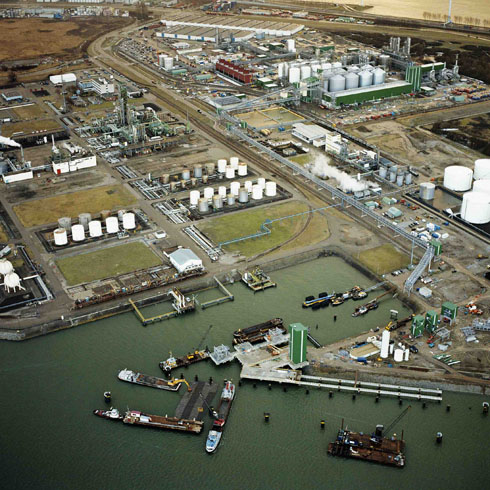
Abengoa's plant at the Europoort, Rotterdam, Netherlands
Having begun operations in 2010, Abengoa’s plant at the Europoort, Rotterdam, Europe’s largest bioethanol plant and one of the largest in the world, with an annual grain-to-bioethanol production capacity of 480 ML. Apart from bioethanol, the Europoort plant has an annual DGS and high-quality CO2 production capacity of 360,000 t and 400,000 t, respectively. The CO2 is transported through pipelines to the various greenhouses in the region and is used to help grow crops, thus reducing reliance on natural gas, enhancing sustainability and cutting total GHG emissions.
Moreover, over the course of 2011 Abengoa continued to operate its second-generation bioethanol plant at Babilafuente, Salamanca, Spain. With an annual production capacity of 5 ML of bioethanol from lignocellulosic biomass, this is the world’s first plant to utilize this technology on such a scale.
Since start-up, the Babilafuente demonstration plant has completed over 7,000 hours of operation achieving a yield in excess of 250 L per ton of straw; the target is to exceed a yield of more than 300 L per ton. These results are demonstrating the viability of enzymatic hydrolysis technology, which the company has been developing and strongly investing in for some time.
The Babilafuente plant is also carrying out the scaling and industrial production of enzymes using an organism licensed from Dyadic International, a US company that owns industrial enzyme production technologies for cellulose hydrolysis. About 120 t of enzymes in two batches were successfully produced. The properties of the resulting cocktail are analogous to those of the best experiments performed at the laboratory-scale trial phase.
In addition to marketing bioethanol, Abengoa continued work over 2011 on an e85 (bioethanol 85 %, gasoline 15 %) supply network in Europe, primarily in Spain, where it already has over thirty publicly accessible service stations and several fleet supply points, and has sold over 900,000 L of e85. This network is key to expanding the reach of bioethanol, and although the project is still in its early stages, it promises to become an undisputed reality within the next few years, capable of supplying biofuels to consumers across Europe.
Abengoa has signed in France an agreement with the gas producer and supplier Messer for the sale of 65,000 annual t of CO2 generated at the Lacq bioethanol production plant, France, during the cereal grain fermentation process. The agreement provides that Messer is to build a CO2 purification, liquefaction and storage facility annexed to the Porte d’Abidos (Lacq) bioethanol plant. The Messer group will use the CO2 for various industrial applications: chemicals, food, etc. With this initiative, the plant will reduce greenhouse gas emissions by 18 %, so total emissions savings will exceed 70 % in 2012, once the new facility is in operation. The installation will constitute an important milestone, being the first of its kind in the area, and will significantly bolster the Lacq industrial estate where it is to be located, and favor the rise of innovative projects that will nurture the emergence of new local industrial tissue.
The Cenit I+DEA project, led by Abengoa, is scheduled for completion after 4 years of work. The project brings together 25 companies and 27 research centers and has a total budget of over €27 M. The project scope embraces the entire bioethanol cycle, from raw material production to biotechnology developments (energy crops and enzymes) and processing technologies, through to bioethanol use in combustion engines.
The RED Bioenergy Sustainability Assurance (RBSA) certification standard developed by Abengoa was adopted in July 2011 by the European Commission (EC) in the first decision of its kind taken by Brussels.
Specified in accordance with the Renewable Energy Directive, the RBSA standard enables certification candidates to demonstrate compliance with the sustainability requirements under the Directive as regards any input material or production process, from agricultural production through to marketing of the biofuel, including industrial processing stages.
In addition to stipulating mandatory operational requirements for all economic players involved and for the management and maintenance of the standard itself, RBSA sets the highest quality requirements for the processes of independent auditing and certification of the information supplied.
Finally, the system comprises innovative methodologies to calculate greenhouse gas emissions and develop sustainable maps, so as to support effective and rigorous supply chain implementation of these new sustainability requirements. Biofuels developed will be marketable throughout the EU under the “sustainable” certificate, which will uniquely recognize this assurance everywhere in the European Union.
Leonesa Astur de Piensos, which produces and markets cereals, became the first company to receive Abengoa’s biofuel sustainability certificate (RBSA). The company successfully completed the process of securing Abengoa’s biofuel sustainability standard (RBSA) in August of 2011
Construction work began on the Ecoalgas project experimental plant. The aim of the project is to evaluate technologies for growing microalgae and cyanobacteria as raw materials for producing biofuels and animal feed and for sequestering CO2 generated by fermentation in the bioethanol production process. The supply of raw materials and CO2 emission reduction during fermentation processes for bioethanol production are key, strategic points for the development of second-generation biofuel production technologies.

World Biofuels Conference, Sevilla
The Ecoalgas project’s experimental plant will have a total floor area of 5,000 m2. Located in Cartagena (annexed to the bioethanol production plant), it will be fed by the CO2 generated in the cereal grain fermentation process.
Construction completion and commissioning are scheduled for January 2012.
May 2011 saw the official launch of the Biofuel From Algae Technologies (BIOFAT) project, within the European Commission’s Seventh Framework Program. Led by Abengoa and involving another seven European partners, the project aims to demonstrate micro algae-based biofuel production technology on a large scale using a cultivation area of up to 10 hectares in Cartagena. BIOFAT’s total budget of €11 M carries a related grant of €7.8 M.On May 10, 2011, the Hospital de los Venerables church in Seville was the venue for the 10th World Biofuels Conference 2011, in the context of the Focus-Abengoa Forum on Energy and Climate Change.
The 10th World Biofuels Conference is one of the activities set in motion by the Focus-Abengoa Forum on Energy and Climate Change, an entity that supports initiatives in energy research and discussion of issues surrounding renewable energies and corporate action. The purpose of the forum is to contribute to the debate on the change of energy model from a multidisciplinary perspective.
World Biofuels 2011 aims to promote, through public debate, a genuinely open platform for researching, presenting and contrasting ideas and results through whatever actions are deemed relevant at any given time, in accordance with the nature of the issues to be analyzed.
Abengoa’s European trading subsidiary has achieved certification of its integrated management system pursuant to the requirements of ISO 9001:2008 (quality management system), ISO 14001:2004 (environmental management system) and OHSAS 18001:2007 (occupational health and safety management system).
All three certificates were awarded by Bureau Veritas Certificación S. A. on January 21, 2011. The certification scope covers services provided by the company, including: the marketing of bioethanol produced by any pool participant via the framework service agreement, integrated management of supply, including logistics and terminals coordination, risk management, third-party bioethanol purchases (Buy/Sell) and bioethanol market analysis.
The company operates the following production facilities in Europe:
- Ecocarburantes Españoles
-
Owned by Abengoa (95 %) and IDAE (5 %).
-
Installed capacity of 150 ML of bioethanol per year.
-
Annual DGS production capacity of 110,000 t.
-
Electrical power production capacity of 135,000 MWh per year.
-
Annual grain consumption of 300,000 t.
-
Estimated annual consumption of wine and sundry alcohol of roughly 50 ML.

Bioethanol plant in Valle de Escombreras, Cartagena, Murcia
It currently employs 79 highly qualified workers.
Part of the CO2 produced during the grain-to-ethanol transformation process is sold to facilities close to the plant, thereby eliminating the need for these companies to produce their own additional CO2 and, therefore, making the bioethanol production process even more efficient and curbing CO2 emissions into the atmosphere.
Similarly, electricity is generated during the production process, which provides power for the entire plant, with the surplus delivered to the national power grid.
- Bioetanol Galicia
- Owned by Abengoa (100 %).
- Installed capacity of 196 ML of bioethanol per year.
- Annual DGS production capacity of 130,000 t.
- Electrical power production capacity of 204,000 MWh per year.
- Annual grain consumption of 340,000 t.
- Estimated annual consumption of wine and sundry alcohol of roughly 50 ML.
The plant is currently in operation in Teixeiro (A Coruña). It currently employs 82 highly qualified workers. The surplus electricity generated during the bioethanol production process, which greatly outstrips actual plant consumption, is delivered to the national power grid, thus enhancing the profitability of the process.
- Biocarburantes de Castilla y León
- 100 % owned by Abengoa.
- Installed capacity of 200 ML of bioethanol per year. A
- nnual DGS production capacity of 120,000 t.
- Electrical power production capacity of 204,000 MWh per year.
- Annual grain consumption of 585,000 t.
- Estimated annual consumption of wine and sundry alcohol of roughly 25 ML.
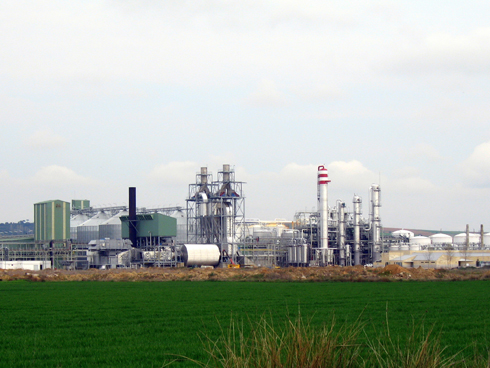
Bioethanol plant in Babilafuente, Salamanca
The plant is located in Babilafuente, Salamanca, Spain. It currently employs 110 highly qualified workers.
As with the other Spanish plants and in accordance with applicable law, plant-generated electricity that is not employed in bioethanol production is delivered to the power grid.
- Abengoa Bioenergy France
- Owned by Abengoa (69 %) and Oceol (31 %).
- Installed capacity of 250 ML of bioethanol per year.
- Annual DGS production of 145,000 t.
- Annual grain (corn) consumption of 500,000 t.
- Estimated annual consumption of wine and sundry alcohol of roughly 50 ML.
The facility owners are Abengoa (69 %) and Oceol (31 %), an association of the region’s main agricultural cooperatives and industries. The company employs 73 highly qualified employees.
This plant employs corn and low-quality vegetable alcohols as raw materials and is located on the Petrochemical Platform at Lacq, Pyrénées-Atlantiques (France).
- Abengoa Bioenergy Netherlands
- 100 % owned by Abengoa Projected annual bioethanol production capacity of 480 ML.
- Annual DGS production capacity of 360,000 t.
- Electrical power production capacity of 400,000 MWh per year.
- Annual grain consumption of 1.2 Mt.
The company employs 84 highly qualified employees.
- Lignocellulosic biomass plant
- 100 % owned by Abengoa
- Cereal straw-based bioethanol production capacity of 5 ML per year.
The biomass plant was completed in December 2008 and has been fully operational since September 2009. It is the world’s first plant to utilize enzymatic hydrolysis technology at this level of output. It is located within the Salamanca bioethanol plant, meaning that both facilities share common services and process chains. The ethanol it produces is distilled to 42 % and then concentrated and dehydrated.
The facility is being used to improve the design of the commercial plants of tomorrow, gauge operational costs, identify bottlenecks and streamline operations.
- AbengAbengoa Bioenergía San Roque
- 100 % owned by Abengoa.
- Annual biodiesel production capacity of 225 ML.
- Annual crude glycerin production capacity of 18,500 t.
- Annual vegetable oil consumption of 205,000 t.

Biodiesel plant in San Roque, Cadiz
The plant is located on a site annexed to Cepsa’s Gibraltar Refinery on the Palmones de San Roque industrial estate (Cadiz, Spain). It has been designed to operate with different kinds of vegetable oil - soybean, rapeseed and palm - and does not therefore depend on just one supply source. Its entire biodiesel output is supplied to the Cepsa refinery. The plant directly employs 55 highly qualified workers.
United States
Abengoa is one of the leading bioethanol producers in the United States. It currently boasts an annual installed production capacity of around 1,440 ML, distributed among its six plants located in Nebraska, Kansas, New Mexico, Indiana and Illinois. The company is also one of the main marketers of ethanol and DGS for animal feed.
Abengoa’s production assets in Nebraska, Kansas and New Mexico enjoy direct access to the western United States market via the BNSF and UP railroad lines and road tankers. The production assets in Illinois and Indiana afford access to the eastern United States market via the CSX, NS, CN and KCS railroad lines, road tankers and river barges.
Abengoa is also a market leader in second-generation biofuels and sustainability. All the company’s production assets are compliant with United Nations Global Compact guidelines on human rights, labor rights, environment and the fight against corruption. Abengoa strives constantly to reduce its biorefineries’ carbon footprint.
Abengoa has obtained a federal loan guarantee worth $132.4 M from the US Department of Energy for construction of the first commercial-scale plant to produce second-generation ethanol from biomass. Located in Hugoton, Kansas, construction commenced on the plant in September 2011.
The construction period is expected to be 24 months, during which an estimated 300 direct jobs will be created in the area. Once completed, the plant will have a production capacity of around 100 ML of clean, sustainable cellulosic ethanol per year, and will create a further 65 jobs in the course of future operation.
The project is designed to convert close to 300,000 annual t of agricultural waste, such as corn stover (stalks and leaves), into approximately 100 ML of biomass ethanol per year, using an innovative enzymatic hydrolysis process. The plant will maximize the utilization as raw material of crop waste that would otherwise go unused. It is calculated that the plant will replace the consumption of 59 ML of gasoline annually, so avoiding atmospheric emissions totaling more than 139,000 t of CO2.
The hundreds of jobs that will be created in connection with this project will generate revenue of around $5 M annually for the United States. In addition, the project provides a new outlet for Kansas’ farm produce, and thus strongly benefits the local area and the state as a whole.
Abengoa has also won the backing of the US Department of Agriculture (USDA) for the development of the Hugoton plant.
A set of four Biomass Crop Assistance Programs (BCAPs) will be introduced to increase availability of non-food crops for biofuel production. The program will be implemented in connection with the future Hugoton plant in Kansas. Fast-growing energy crops are used to produce biofuels or energy in various forms, such as heat and electricity.
In early 2011 Abengoa resumed operations at its bioethanol plant in Portales, New Mexico. The facility is designed to produce up to 115 ML of ethanol annually. Given its energy efficiency and its exclusive use as raw material of sorghum, a cereal crop normally grown without need of irrigation in Roosevelt County and its surrounding area, The plant provides a model of sustainable fuel production in America, allowing farmers to preserve their way of life and preserve water resources. The resumption of operations and the hiring of 40 new employees for the plant entail major economic benefits for Portales and Roosevelt County.
The company has increased the capacity of its Houston Ship Channel storage terminal to a total of approximately 13 ML. Operated by the company under lease, the terminal allows for loading and unloading to or from train, truck, barge and ship, while also providing direct access to international waters, thus opening up imports and exports to and from the United States. It also complements the company’s bioenergy hubs in two other major international ports, namely Rotterdam in Europe and Santos in Brazil.
In 2011, Abengoa achieved an increase in maritime bioethanol exports. The company also raised DGS and pellet export activity by barge along the Mississipi and Ohio rivers. The trading subsidiary has positioned itself with strategic terminals in various areas of the United States, the highlight being its Gulf of Mexico terminal.
On November 17, Abengoa staged a biomass seminar at its new Hugoton biomass plant. The event brought together over 200 delegates to discuss the development of the project and to witness a demonstration of biomass collection techniques and the recently developed equipment and machinery.
This new equipment has the potential to revolutionize the way in which agricultural waste can be collected safely and sustainably, which will lead to long-term gains for both producers and the cellulosic ethanol industry.
The company continued to implement the STOP safety program at all plants, thus improving occupational safety and enhancing plant efficiency.
The Indiana and Illinois facilities received OHSAS certification for the ISO 9001:2000, 14001:2004 and 18001:2001 standards; hence all plants in North America hold official OHSAS certification, underscoring the commitment of Abengoa to quality, safety and the environment. This set of rules is a verifiable health and safety system and was considered to reflect the company’s desire to have in place a standardized occupational health and safety system that can be used for the purposes of certification and registration. With the initial audits now finished, the companies operating the plants in Indiana and Illinois and the trading company now satisfied the requirements to secure the ISO 9001, ISO 14001 and OHSAS 18001 certificates. All U.S. plants are now registered under these standards.
In North America, Abengoa has made a commitment to implement ISO 8000 at all plants and at the corporate headquarters in St. Louis, Missouri.
The company operates the following production facilities in the United States:
- Abengoa Bioenergy Corporation – Colwich
- 100 % owned by Abengoa.
- Installed bioethanol production capacity of 95 ML per year.
- Annual installed DGS production capacity of 70,000 t.
- Combined annual consumption of corn and sorghum of 240,000 t.
The plant currently operates at 100 % capacity and continues to report excellent efficiency and consistent operations. Production capacity amounts to 95 ML per year, achieved through continuous batch cooking and fermentation processes. The plant currently employs 46 highly qualified workers.
It is one of the oldest dry mill bioethanol facilities in the United States, having been operating non-stop for the last 25 years. The DGS it produces is not dried in the process and 100 % of the coproduct is sold in its natural state. The plant can process corn and sorghum at the same time and 50 % of its energy requirements are covered with methane from a municipal solid waste landfill.
- Abengoa Bioenergy Corporation – Portales
- 100 % owned by Abengoa.
- Installed bioethanol production capacity of 115 ML per year.
- Annual installed DGS production capacity of 75,000 t.
- Annual consumption of corn and sorghum of 260,000 t.
Expansion work was completed in 2006 to double production capacity by utilizing batch cooking and fermentation processes, with two separate distillation and dehydration stages. The DGS it produces is not dried in the process and 100 % of the coproduct is sold in its natural state. The plant can operate with corn and sorghum simultaneously and has an annual installed bioethanol production capacity of 115 ML. The fully operational plant employs 46 highly qualified workers.

Bioethanol plant in Portales, New Mexico
- Abengoa Bioenergy Corporation – York
- 100 % owned by Abengoa.
- Installed bioethanol production capacity of 210 ML per year.
- Annual installed DGS production capacity of 145,000 t.
- Annual corn consumption of 520,000 t.
The plant currently operates at 100 % capacity and continues to report excellent efficiency and consistent operations. More than 50 % of the produced CO2 is captured and refined by an on-site customer. The facilities also provide services and logistical support to Abengoa’s adjacent pilot biomass plant. Production capacity amounts to 210 ML per year, achieved through continuous batch cooking and fermentation processes. The plant currently employs 55 highly qualified workers.

Bioethanol plant in York, Nebraska
- Abengoa Bioenergy of Nebraska
- 100 % owned by Abengoa.
- Installed bioethanol production capacity of 340 ML per year.
- Annual installed DGS production capacity of 230,000 t.
- Annual corn consumption of 825,000 t.
Construction on the plant got underway in 2005 and was completed in 2007. The plant is currently operating at 100 % capacity according to specifications and boasts an installed bioethanol capacity of 340 ML per year, achieved through continuous fermentation. It employs 60 highly qualified workers. The facility is the first in North America to utilize continuous fermentation technology.
The project includes a double railway circuit for simultaneous loading and shipment of 10 ML of bioethanol in 95 tank cars.
The plant is designed to recycle all process water, which is then treated and made ready for reuse. The plant therefore consumes less water, produces minimal pollution and has the minimum possible impact on the ecosystem.
- Abengoa Bioenergy of Indiana
- 100 % owned by Abengoa.
- Installed bioethanol production capacity of 340 ML per year.
- Annual installed DGS production capacity of 230,000 t.
- Annual corn consumption of 825,000 t.
The plant is located near Evansville, Indiana, in the so-called Corn Belt and next to the Ohio River, one of the country’s main river routes. The bioethanol and DGS produced on-site can be transported by truck, train or boat to supply the markets on the eastern side of the United States, or exported to other markets.
The Indiana plant currently employs 60 workers. When operating at full capacity, it consumes 825,000 t of corn, and produces 340 ML of bioethanol and 230,000 t of DGS per year

Bioethanol plant in Mount Vernon, Indiana.
- Abengoa Bioenergy of Illinois
- 100 % owned by Abengoa.
- Installed bioethanol production capacity of 340 ML per year.
- Annual installed DGS production capacity of 230,000 t.
- Annual corn consumption of 825,000 t..
The plant in Madison, Illinois, is sited next to the Mississippi River, one of the main communication and transport arteries running through the U.S. Midwest. The facility generates bioethanol and DGS from corn and gets through 825,000 t of cereal grain per year as raw material. It produces 340 ML of bioethanol and 230,000 t of DGS per year and employs 60 people.
- Abengoa Bioenergy Biomass of Kansas
- 100 % owned by Abengoa.
- Annual biomass-to-bioethanol production capacity of 100 ML.
- Daily biomass consumption of 1,000 t, including power cogeneration fuel.
The aim of the project is to construct a plant capable of producing 26 Mgal (100 ML) of cellulosic ethanol and 22 MW of renewable energy from biomass (mix of agricultural waste, wood waste and non-food energy crops). The plant will be located to the west of Hugoton, Kansas, and will create 65 permanent jobs.
The Hugoton plant, on which construction commenced in July 2011, is scheduled to come into operation in June 2013.
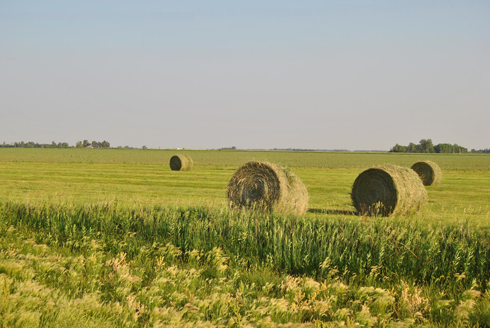
Biomass used to produce second-generation bioethanol
Brasil
Brazil is one of the world’s largest markets for bioethanol, and bioethanol production is expected to continue growing sharply thanks to the success of flex-fuel vehicles, which currently account for nearly 90 % of vehicles sold in Brazil and which can run on either gasoline or bioethanol.
Abengoa is the only company worldwide that operates in the world’s three largest bioethanol markets: Europe, the United States and Brazil. Having streamlined operations in Brazil, the company is reporting sharp growth in production throughout all its existing plants. It is also weighing up the merits of constructing a new plant and is marketing its production overseas more effectively, thanks to the sales networks the company has in place. Moreover, the company is making technological advances and improving sugarcane bagasse to cellulosic ethanol technology so as to increase production in the mid-term and cut costs efficiently.
The company currently operates three plants: two sugarcane-to-bioethanol plants, with an annual installed capacity of approximately 235 ML of ethanol and 640,000 t of sugar, and one plant that produces 30,000 t of sugar and 25,000 t of molasses.
2011 also saw the operational entrenchment of the company’s two cogeneration plants in Brazil. Over a full sugarcane growing period, the plants achieve installed capacity of 140 MW, generating 373,073 MWh per year for sale; this power is brought to market under contracts compliant with Brazilian electricity industry regulations.
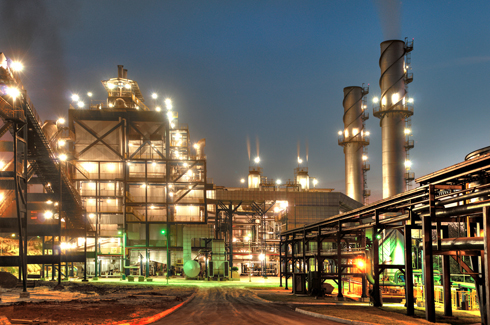
Cogeneration at the plant located in São Luiz, Pirassununga, Brazil
The raw material for these two plants is sugarcane bagasse, which is fed into the boilers to produce steam. The steam is then used to generate electricity in order to feed the production processes. The cogeneration plants are located in the state of São Paulo, one at the São Luiz plant in the city of Pirassununga, and the other at the São João plant in the city of São João da Boa Vista.
In August 2011, Abengoa started extension works on the plant located in São Luiz, Pirassunuga, Brazil. The project will replace the present mill —with capacity to process 620 t of sugarcane per hour— with a new facility specified to process 750 t of sugarcane per hour.
When the new sugarcane mill comes into operation at the Pirassununga plant in March 2012, milling capacity will increase from the current 2.8 Mt to 3.5 Mt of sugarcane annually. Coupled with the enlargement of the São João plant in 2010, Abengoa will have installed sugarcane processing capacity of 7.3 Mt by the upcoming 2012 growing period.
In March 2011, the Brazilian subsidiary was officially certified under SA 8000. As the first industry player to earn this quality mark, the company gains a key competitive edge, and assures compliance with internationally recognized management standards.
The SA 8000 standard is the first internationally recognized human resources management certificate and constitutes a key building block of Corporate Social Responsibility. The aim of certification is to assure employee rights by laying down procedures and systematically specifying processes for managing human resources and suppliers.
By certifying to the standard, Abengoa has become a pioneering corporate citizen in the Brazilian bioenergy industry. It is the only Brazilian producer of sugarcane-based bioethanol to have attained this certificate.
In October of 2011, the two cogeneration plants of Abengoa in Brazil were audited by the Spanish Association for Standardization and Certification (AENOR) under ISO 14001 (environmental management) and OHSAS 18001 (health and safety) standards. The reports confirmed that cogeneration activities at the São Luiz and São João facilities presented no “non-compliances”. AENOR issued the corresponding certificates midway through December 2011.
The certificates mark a new milestone for Abengoa in Brazil, which was awarded the ISO 9001 certificate in 2009 for all agricultural divisions and its two plants in Pirassununga and São João da Boa Vista, ranging from the sugar cane plantation up to marketing of the crystalline sugar, ethanol and electrical power. The standard remains in effect today.
Abengoa signed a partnership agreement with IAG (Instituto de Administração e Gerência), a related entity of the Pontifício Universidade Católica do Rio de Janeiro, PUC/RJ (Brasil), widely acknowledged as the country’s leading private institution, to cooperate in the training of project managers.
The company operates the following production facilities in Brazil:
- Abengoa Bioenergia São Luiz:
- Installed capacity of 91 ML of bioethanol per year.
- Annual sugar production of roughly 285,000 t.
- Electrical power production capacity of 172,000 MWh per year.
- Annual sugarcane consumption of 3 Mt.
- Abengoa Bioenergia São João
- Installed capacity of 144 ML of bioethanol per year.
- Annual sugar production of roughly 360,000 t.
- Electrical power production capacity of 201,500 MWh per year.
- Annual sugarcane consumption of 3.5 Mt.
In August and September 2010, in both Pirassununga and São Joao plants electricity cogeneration commenced at 70 MW each, using sugarcane bagasse, the raw material used in the company’s own sugar and ethanol mills.
Now that these plants are in operation, Abengoa has added a third major product, energy, to the sustainable development of its bioenergy businesses in Brazil.
- Abengoa Bioenergia Santo Antônio de Posse:
- Annual sugar production of roughly 30,000 t.
- Annual sugarcane consumption of 300,000 t.
- Annual molasses production of roughly 20,000 t.
This particular sugar and molasses production plant only accounts for business and sales within Brazil, albeit to a lesser extent than the other plants operating in the country. The company is currently streamlining processes to up operational performance.
Recycling business
Abengoa engages in different activities in the industrial production segment, focusing on industrial waste recycling.
The company manages over 2.2 Mt of waste, channeling 1.3 Mt into the production of new materials through recycling.
Steel waste recycling provides a high value-added environmental service via the treatment and recycling of waste resulting from the manufacture of common and stainless steel and of waste produced from the steel galvanization process. Abengoa has eight production plants in Europe and one in Turkey, which play a fundamental role in the zinc recovery cycle, avoiding zinc loss by cutting down on dumping and helping reduce the need to mine zinc, nickel and chrome. The company is the European leader in the treatment and recovery of steel dust and the only organization in Spain to offer an integral steel dust collection and treatment service for recovery.
The aluminum waste recycling division provides collection and treatment services for aluminum-containing waste, manufactures and markets aluminum alloys, and designs, builds and assembles aluminum recycling equipment, helping in particular to decrease CO2 emissions as compared to the primary aluminum industry. The division also recycles salt slag, a hazardous waste generated from the aluminum waste recycling process, and hazardous spent potlining (SPL) waste from used electrolytic cells. Recovery of salt slag and SPL provides a viable alternative to dumping. The purpose, in the case of salt slag, is to separate the metallic aluminum, the salt and the aluminum oxide, while for SPL, the aim is to eliminate cyanides and soluble fluoride salts. All solid metals thus obtained are reused, bringing the recycling cycle full circle and making valuable use of all aluminum-containing waste
.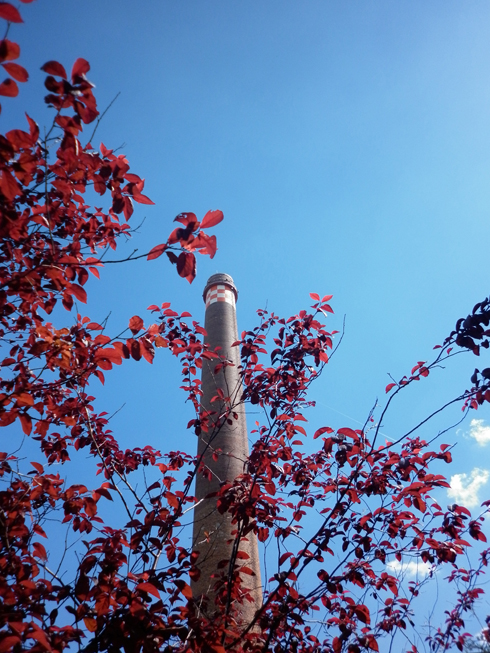
Zinc facilities in Freiberg, Germany
The industrial waste management division handles all stages of the industrial waste management cycle: ranging from transportation, temporary storage, treatment and valorization, to recovery and controlled and safe final disposal, all in strict accordance with Spanish and European environmental law. It also provides high value-added industrial cleaning services to most industrial sectors and has an area that provides effective solutions for the collection, transportation and elimination of PCB-contaminated materials, transformers and condensers, and for recycling the film used to cover greenhouses. Lastly, it provides a range of fully-comprehensive soil decontamination solutions.
Furthermore, this unit performs sulfur recovery work to produce sulfuric acid from residual sulfur, while generating electricity, which is then sold and returned to the grid.
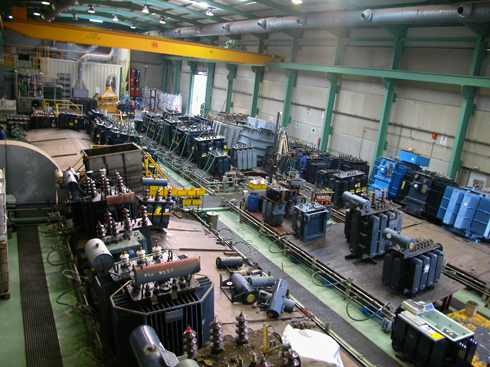
PCB-contaminated material treatment plant in Cartagena, Spain
Steel and galvanization waste recycling
Despite the present economic juncture, in which industry continues to operate at lower volumes than prior to the economic downturn, the business unit experienced considerable year-on-year growth over 2011 by utilizing more installed production capacity at its stainless steel waste recycling plants, due to the opening up of new foreign markets for raw material procurement. The overall figures of the common steel dust recycling division include the full-year manufacturing figures for the site at Iskenderun, Turkey.
Abengoa is the European leader in zinc waste recycling and aims to become a leading global player in steel dust recycling, on the back of international expansion driven by acquisition of facilities already in operation and construction of new plants equipped with proprietary technology in countries producing high volumes of steel or having high growth potential in the iron and steel sector.
In 2011, the company processed a total of 649,352 t of waste, of which 83.8 % (544,460 t) was residual dust from common steel foundries, making for an 12.7 % increase year on year and thus avoiding the need to mine almost 222,000 t of zinc and giving back almost 122,122 t to the production cycle.
The company has also processed a further 88.8658 t of dusts obtained from stainless steel production processes (3,5 % more than in 2010), recovering its iron and high-value metal content, such as nickel and chrome.
In both cases, less energy is used and less CO2 (greenhouse gas) is released into the atmosphere than if the same commodities were obtained by primary processes.
16,234 t of galvanization waste were recycled for processing into zinc oxide, zinc ingots (ore and electrolytic) and fine zinc ashes.
This input volume has enabled the company to obtain 188,420 dry t of Waelz Oxide, representing a year-on-year increase of over 9.4 %. The volume of treated Waelz Oxide (D-L.W.O.®) was higher than the previous year’s, standing at 123,724 t. The stainless steel dust recycling plants also produced 39,514 t of nickel and other metal alloys, 2.9 % below than in 2010, and 48.364 MWh of electricity was self-produced at the production facility in Sweden.
To achieve these results, Abengoa now operates nine facilities worldwide, eight in Europe and one in Turkey.

Waelz furnace in Erandio (Spain)
The treatment and recovery of dust from gas filters installed at electric arc steel furnaces manufacturing common steel is carried out at five plants operated by this business unit, across four countries: Germany, France, Turkey and Spain.

Stainless and special steel manufacturing wastes, which in addition to iron contain metals such as nickel, chrome and molybdenum, are recycled at two other European plants: in France and Sweden.
Finally, Abengoa’s Sondika and Amorebieta plants treat zinc waste and zinc alloys generated by the galvanization, metal injection and construction sectors. In 2011 these facilities recycled a combined total of 16,234 t of waste, reflecting a 14.9 % increase in treatment volume.
Total products and byproducts produced by the two sites came to 14,185 t, 2.6 % more than in 2010, of which over one half (58.4 %) corresponded to zinc oxide (ZnO), with the remainder mainly comprising ingots of zinc ore, ingots of electrolytic zinc and the fine zinc ashes.
The powerful rise in business at the Sondika and Amorebieta sites is due to three factors: (i) gradual recovery in zinc oxide ceramic markets; (ii) research-driven widening of the range of finished products, based on the use of raw materials with a lower zinc purity; and (iii) opening up of new domestic and international markets in the tire and rubber manufacturing industries.
Thanks to the sterling work conducted in 2009 and 2010 to penetrate new territories and diversify its waelz oxide customer portfolio, the company managed to sell a grand total of 186,310 t of this product, 7.9 % up on figures for 2010 and close to the entire output for the year, making it one of the world’s leading primary zinc foundries..
27,867 t of nickel-rich and other steel alloys were sold (7.6 % up year on year).
Moreover, the high prices that zinc fetched on the international market over the year (the listed price on the London Metal Exchange, or LME, averaged close to $2,200 per ton of Zn-SHG) have had a positive economic impact on profits, despite being largely offset by the previously signed metal price hedging agreements.
The facilities within the steel dust and galvanization recycling division invested over €6 M in property, plant and equipment in 2011, the most significant entries being the acquisition of new industrial equipment and improvements to the efficiency of certain core operations and processes.
Aluminum waste recycling
Abengoa is currently the European leader in aluminum waste and salt slag recycling, operating in accordance with a unique business model that integrates the two branches of aluminum waste recycling.
The main competitive edges underpinning Abengoa’s goal of continued sustainable growth include in-depth knowledge of the processes and technologies involved in aluminum waste recycling, a broad range of products derived from secondary aluminum and excellent commercial relations with customers and suppliers of raw materials.
Aluminum-content waste recycling and comprehensive re-use for aluminum alloy production
The aluminum waste recycling business unit recovers aluminum contained in various different types of waste. The company does this by collecting and transporting waste and aluminum scrap metal, carrying out its integral recovery and producing and marketing aluminum alloys. Recycled aluminum waste is primarily used to produce alloys, which are then sold to the construction and automotive industries and turned into components. It is worth noting that this line of business is particularly effective at reducing CO2 emissions.
Abengoa carries out these activities at three plants - Biscay, Valladolid and Barcelona (Spain) – and has achieved an uncontested lead in the Spanish market.
Its strategic goals and business processes mirror the commitments assumed by the aluminum industry: to eliminate, in the mid-term, the dumping of solid waste directly and indirectly generated by the industry. The company is working tirelessly to incorporate further innovative treatment technologies for recovering waste, thereby helping the industry to move forward sustainably.
Recycling of salt slag, SPL, filter dust, fine particles generated by aluminum sludge crushing and other aluminum industry wastes
Salt slag is a hazardous waste generated by secondary aluminum production in rotary ovens. The European market accommodates a volume of 0.9 to 1 Mt annually.
Abengoa’s aluminum waste recycling model, based on proprietary technology, involves the end-to-end comprehensive recovery of all waste generated by the aluminum industry and aluminum goods at the end of their life cycle. It is precisely the salt slag and SPL recycling business that brings this process full circle and makes it a meaningful venture.
As is also the case with the manufacture of parts and other products, oxides and other impurities are incorporated along the aluminum production value chain. The valorization of these is more costly, because of both the technical difficulties involved in the industrial process and also the lower financial value of the products that can be recovered. Due to its physical and chemical properties and in particular its lightness, aluminum plays a crucial role in helping to curb greenhouse gases within the transportation sector.
Our plants also recover other types of waste from the aluminum industry, such as gas filtering dust and the dust obtained from milling and grinding aluminum dross.
The company has also been treating the waste produced by primary aluminum electrolysis (SPL) since 2011. This hazardous waste, which contains cyanides and soluble fluoride salts, is generated during the process of obtaining primary aluminum from minerals. Due to the significant volume of waste generated, 22 kg per ton of primary aluminum to be precise, the need to recycle SPL has become one of the industry’s most pressing environmental challenges. To date, there have only been partial treatments of the waste and most ends up being dumped at authorized sites. Abengoa, on the other hand, offers fully comprehensive management with integral waste recovery and provides leading waste producers with a definitive solution.
Sale of machinery and technology
The machinery and technology sales division provides technical support to the aluminum waste recycling plants, and is engaged in the design, construction, assembly and start-up of installations for the aluminum and zinc industries. It boasts an extensive portfolio of more than 100 installations in 40 different countries. Its main products include automated lines for producing 5-25 kg aluminum ingots, casting wheels, rotary ovens and sludge cooling and treatment facilities.
Milestone projects carried out in 2011 include: commissioning of a casting line for Aluar in Argentina and start-up of an ingot casting line for Hillside in South Africa. The company also designed, manufactured and delivered casting lines for Balco and Hindalco in India and made its first delivery to Maaden in Saudi Arabia.
A highlight was the project set in motion in partnership with Hindustan Zinc to supply zinc and lead casting lines, representing product and market diversification for the business division. Despite the difficulties stemming from the widespread slump in investment, this business unit has completed all its projects and its order intake is sufficient to guarantee work for the next twelve months.
Industrial waste management
Through its centers and offices located across Spain, Abengoa aims to provide its customers with an integral waste management service, while minimizing or reducing the potential environmental impact through suitable management.
The company’s main competitive edge is the fact that it operates across the integral industrial waste management cycle and is therefore able to harness significant synergies between the various links in the chain. Demand for Abengoa’s industrial waste management services flows in from small and medium-sized companies with a strong local component, and also from the environmental divisions of large industrial companies generally associated with the construction trade..
The current economic crisis affecting the automotive, steel, chemical, petrochemical and construction industries has led to a significant drop in waste generation. This is due to low levels of industrial activity, which have had a negative impact on the company’s business.
Industrial waste
Abengoa manages, recycles, valorizes and reuses waste through cutting-edge technology under the 3R rule: “Reduce, reuse and recycle”, based on the premise that the best waste is no waste. This way, materials that can be put to subsequent use are recovered, thus helping to reduce our reliance on new raw materials. The company accomplishes this not only through its 15-plus network of centers distributed throughout Spain, which treat waste to reduce the associated contamination, but also through its transfer centers, at which waste is separated, classified and sent off for recovery, recycling and/or valorization, thus reducing the consumption of natural resources. Lastly, it has a safety storage landfill site for the controlled disposal of waste that cannot undergo any further form of treatment.
Abengoa held its leading position in Spain’s industrial waste recycling sector, managing 768,202 t of industrial waste, 13 % of which corresponded to recycled industrial waste, versus 10 % last year.

Industrial waste management center, Ajalvir, Spain
Industrial cleaning
The industrial cleaning division’s activities contribute to the sustainable development of the industries it serves, combining the goals of minimizing waste production, maximizing waste recovery, reusing raw materials and developing more efficient equipment, leading in turn to lower energy consumption. Its wide range of services includes mechanical and high pressure hydrodynamic cleaning processes, ultra-pressure hydrodemolitions and hydrocutting; chemical cleaning and steam blowing; air through circuits and boilers; changes of catalyst beds; cleaning of refinery tanks and oil installations, both manually and with automated systems; on-site waste treatment by means of mobile and fixed plants, and cleaning of interchangers.
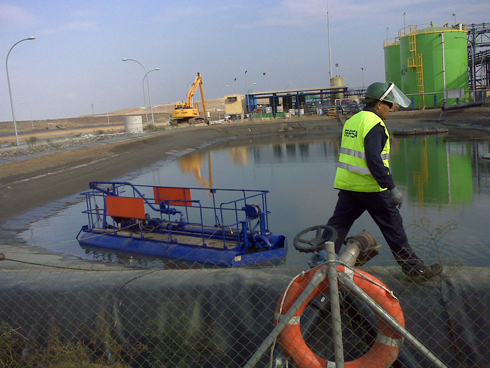
Abengoa industrial cleaning worker
International expansion continued with chemical cleaning and steam blowing contracts for the Hassi Ramel solar thermal plant in Algeria, in addition to the company’s domestic presence in the pre-operational chemical cleaning market for thermal power and solar thermal plants, where the division secured chemical cleaning and steam blowing contracts for the Helioenergy I and II solar thermal plants in Ecija, Seville, and dismantled the Iberdrola thermal power plant at Santurce. In addition, the division was awarded contracts by Cepsa and Repsol to extract and load catalyzers.
Soil decontamination
In 2011, the soil management and decontamination department, now firmly established as the leading Spanish player in soil investigation and restoration, focused on on-site decontamination contracts at oil industry terminals (fuel storage). At these facilities, the company performs various free-phase hydrocarbon recovery projects using pneumatic pumps or double phase (liquid/gas) recovery employing a high vacuum system deployed via wells drilled specifically for the purpose. In addition, on-site treatment is being finalized using bio-cell technology to bio-restore 30,000 t of contaminated soil for reuse at the original site.
Another highlight of the first quarter of 2011 was the assembly and commissioning of an on-site mobile soil washing plant in Gibraltar, which will start work on decontaminating soil from the new airport tunnel.
Sulfur recovery
As part of the Sefanitro Special Plan for Inland Renovation (PERI) of the Baracaldo district in Biscay province, in the context of the sulfur waste recovery business, the land occupied by desulfuration’s facilities was rezoned as residential urban land. This prompted the scheduled shutdown of activities in July 2011. The facilities are currently being dismantled.
So that the division can continue its sulfuric acid and oleum production using waste sulfur from petrochemical plants and reusing process heat to generate power, in late 2009 construction work began on a new plant on land owned by the Port of Bilbao (Zierbena). The new site is currently at the commissioning stage.
Plastics
Plastics division manufactures special low density polyethylene pellets by recycling the film used for covering greenhouses. The sold pellets are then used for a variety of applications, such as manufacturing films for the construction industry (waterproofing and protection), sacks and bags, irrigation piping and electrical and telecommunications ducts. They can also be injected or otherwise used to obtain modified asphalts. Abengoa is the only Spanish organization capable of carrying out the complete recycling cycle from collection to product manufacturing.
Over 2011, Abengoa recycled 14,883 t of film and used irrigation pipes, and likewise produced 11,311 t of polyethylene pellets, thus maintaining its position as market leader in the low density polyethylene recycling business, a field in which it operates in all the major regions of cultivation under plastic in Spain: Alicante, Murcia, Andalusia and Extremadura.
Over the past few years plastics’ research, development and innovation department has developed a process to reuse fiberglass waste —hitherto a non-recyclable material which in Europe alone accounts for 120,000 t of landfill annually— so providing a solution to what has so far been an unsolved environmental issue.
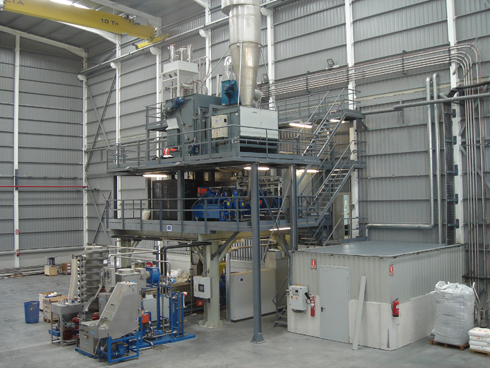
Plastics facilities in Murcia (Spain)
The division’s work culminated with the construction of a pioneering fiberglass recycling plant. The facility will use fiberglass to reinforce plastics and so obtain a material with applications in the automobile and white goods industries, in building insulation, and even for making wind turbine blades. The plant’s most innovative feature is the process that blends the fiberglass with a thermoplastic mesh to produce the compound.
This flexible facility is capable of increasing its capacity and widening the range of wastes it can recycle. The research, development and innovation department is already working on new recycling processes for other materials, including wood and rubber.
PCB
Operates out of Cartagena (Spain) and specializes in providing effective solutions for the collection, transportation and elimination of transformers, condensers and materials contaminated with PCB (polychlorinated biphenyls). Using cutting-edge technology, the company recovers all reusable materials while eliminating all contaminated materials for good.
More than 1,900 t of PCB-contaminated devices and materials were treated by the company during 2011, confirming its market leadership in Spain.
Latin America
Argentina
The Argentinian subsidiary is chiefly concerned with satisfying the needs of various industries, organizations and public and private institutions regarding the management, recycling, recovery, treatment and final disposal of industrial wastes. Abengoa provides these environmental management services using the best technology available on the Argentine market, combining experience, technology and responsible handling of resources.
Activities are carried out mainly in Buenos Aires province, specifically in the localities of Pacheco, Campana and Zárate, where the company’s treatment plants are situated. Administrative and sales functions are performed at head office, located in the City of Buenos Aires.
Abengoa provides the following services in Argentina:
-
Industrial waste transportation and incineration.
-
Waste inertization and final disposal in safety landfills.
-
Laboratory services.
-
PCB and waste export operations.
-
Auxiliary services, including waste and contaminated material crushing and compacting.
It is also is involved in industrial cleaning, physical and chemical cleaning of aqueous waste, recovery and distillation of stainless steel solvents, sludge centrifugation, tank cleaning, and the production of an alternative fuel for cement furnaces called Combustec®.
In 2011, to improve the Pacheco plant’s crushing capacity, a new crushing machine was purchased, which is now in the process of being installed. To develop and improve the industrial analysis laboratory business unit and offer customers a wider range of services, new safe distillation systems were installed.
At the Campana plant, survey work is underway to enlarge the landfill site. In addition, discharge of leachates was directed to the front section of the plant. The procedure has been approved by the Buenos Aires province water administration, ADA, construction work is in progress, and a compliance check has been requested
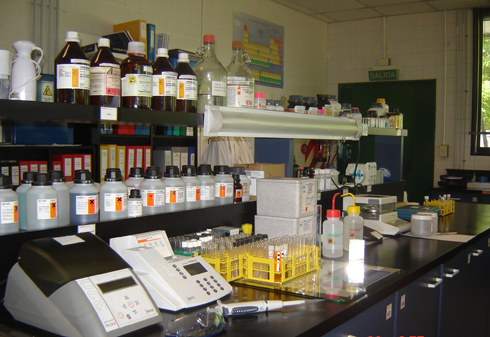
Laboratory at Argentina site
Chile
Abengoa develops in Chile the integral management of solid hazardous and non-hazardous industrial waste, through temporary storage and final disposal systems. The company provides treatments to recover and minimize the hazardous nature of the waste, giving priority to recycling whenever possible. The waste, which is mainly produced by mining and industry, is managed safely and responsibly, contributing to the country’s sustainable development.
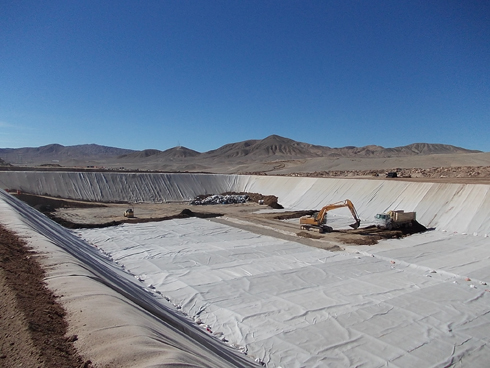
Facilities in Antofagasta,Chile
In operation since May 2008, the Sierra Gorda plant stands on a 40 ha site located in the Atacama Desert, 120 km inland from the city of Antofagasta and 1,600 km from the capital, Santiago.
In 2011, the division managed 12,907 t of waste. In May of the same year, the company obtained certification under the ISO 9001, ISO 14001 and OHSAS 18011 standard
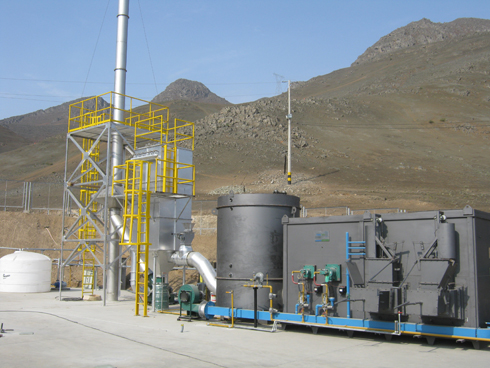
Peru’s incinerator, the country’s first facility of its kind
In addition, close to 300,000 M Chilean pesos were invested in building a 64,000 m3 safety landfill site for hazardous waste disposal, to meet demand from the region’s industrial and mining sectors.
Finally, various contracts awarded by mining companies were performed to the customers’ full satisfaction. Key customers include Cía. Minera Quebrada Blanca (Teck), Cía. Minera Lomas Bayas (Xstrata), Soc. Minera Química (SQM), Compañía Minera Ines de Collahuasi (Angloamerican), Electroandina (Endesa), Terminal Portuaria Mejillones, Minera Las Cenizas, among others.
Perú
In Peru, the company specializes in providing industry with integral environmental services, including the collection and transportation of solid and liquid wastes, waste conditioning and treatment, incineration, final disposal in safety landfills, integrated management on site, and exportation of PCBs.
Abengoa operates the country’s first safety landfill licensed to accommodate industrial waste. The company now has approximately 918 customers and manages over 24,000 t of industrial waste annually.
The year 2011 also saw Abengoa start up the country’s first commercial incinerator, which is capable of treating 800 t/year of inflammable and hospital waste.
During 2011, construction work was completed on the new safety storage landfill site in Trujillo, 563 km north of Lima, scheduled to come into operation in December 2011. This is the first safety landfill located in the north of Peru, and its first basin is designed to accommodate 40,000 t of waste.
Over the year, major investments were made to improve Peru’s facilities.
One highlight project involved the commissioning in November 2011 of a wastewater treatment plant capable of processing approximately 10,000 t of wastewater per year, so considerably increasing waste capture.
November 2011 also saw the commissioning of an inertization machine, which will significantly improve the present density of the deposit by performing a suitable blending of wastes.
Finally, the company Repsol Exploración awarded a two-year contract for the integrated management of all waste generated at the Arica and Nuevo Mundo base camps on oil and gas exploration lots 39 and 57, respectively.
The service covers waste removal from storage facilities at each base camp, packaging, transportation (river-borne and overland), treatment and final disposal.
It is estimated that the company will process and arrange the final disposal of approximately 1,000 t of waste.
México
The Mexican subsidiaries are involved in the management of hazardous waste for industry and the public sector. These activities foster sustainable development by offering a responsible alternative to the management of hazardous waste, which might otherwise lead to significant environmental contamination.
In 2011, Abengoa continued to expand its business of managing waste ultimately intended for third-party facilities. Whereas previously specializing almost exclusively in hazardous waste confinement, the company is now experiencing demand for cement furnaces, confinement of non-hazardous waste, incineration, recycling of waste containing valuable metals, and government-ordered destruction.
A highlight for 2011 was a remediation project, entailing the treatment of over 25,000 t, nearly 9,000 t of which was successfully treated during the year. Waste treated over the year amounted to 12,002 t.
Solar power
In the Industrial Production segment, Abengoa’s business focuses on the development of new technologies via research, development and innovation, and the manufacture and sale of key components for thermal solar and photovoltaic plants.
The development of new technologies that can be applied in-company or sold to third parties is one of the competitive advantages that drive Abengoa’s growth and future viability. Technology evolves swiftly, and companies must have the right expertise available to deal with new projects and market requirements.
This ongoing investment in R&D affords Abengoa more probabilities of offering competitive technologies going forward and the chance to offer a portfolio of solutions tailored to each project and/or market.
R&D
R&D projects are conducted using the Stage-Gate methodology, based on stage-by-stage development with progress assessments to evaluate the degree of achievement of the pre-established targets and the potential of the technology under study. This methodology is used to achieve excellence in R&D development and management, minimizing the risks.
The key aims of the R&D program include obtaining better operating temperatures in both power tower and parabolic trough technologies, in order to boost the efficiency of the power cycle, enhance plant control and operation systems, cut technology investment and operation costs, optimize storage systems and develop new and more efficient photovoltaic technologies.
In line with these challenges, in 2011 the company continued to operate a number of pilot plants at the Solucar complex, which have enabled it to consolidate various key innovation concepts:
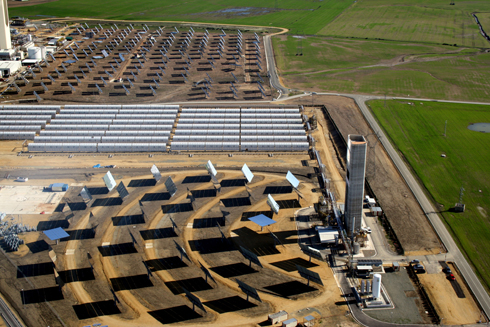
Eureka and GDV (Seville, Spain)
- Over 1,800 hours of operation of a tower-mounted superheated steam generation receiver at temperatures above 500 ºC.
- Water certified as an alternative heat carrier to oil in parabolic trough loops. The direct steam generation (DSG) plant, which also came into operation in early 2009, is ratifying the control system developed by Abengoa in direct steam generation systems.
- Validation of thermal storage. The operation of a demonstration molten salt plant since 2009 has enabled the company to accumulate considerable experience in the use of this fluid to store energy in the form of sensitive heat and to quantify the global performance of this kind of storage.
- The Solugas project, a Brayton cycle plant, and the CRS Sales project, a tower plant with a molten salts receiver, are under construction and scheduled to come online in 2012.
- The development of new photovoltaic technologies based on the experience acquired at the photovoltaic laboratory that has been in operation since 2008 at the Solucar complex.
As a result of this R&D activity, Abengoa has proprietary technology that is protected through patents. Accordingly, the company owns priority rights over a number of significant and crucial inventions which in 2011 gave rise to applications for 27 patents, with a total of 107 solar technology patents petitioned in the last few years.
The company is currently developing both its own research projects and joint projects in cooperation with institutions and universities. The company has close links with prestigious institutions such as the National Renewable Energy Laboratory (NREL), the leading renewable energies laboratory in the United States, Spain’s Energy, Environmental and Technological Research Center (Centro de Investigaciones Energética, Medio Ambientales y Tecnológicas - CIEMAT) and the thermodynamics department of the German Aerospace Centre (DLR).
Lastly, Abengoa is involved in programs that receive grants to support R&D projects promoted by public and private organizations. In the last three years, the company has been awarded five grants for different projects from the United States Department of Energy, a project under the EU’s 7th Framework Program, as well as other projects to develop new technologies subsidized, among others, by the CDTI and the Andalusia regional government. The CENIT project led by Abengoa and with a budget of €24 M is especially significant.
Supply of key components
Ensuring a reliable supply of high-quality key components is essential for the company. Consequently, through investees, Abengoa controls the design and manufacture of certain components considered to be critical, such as the heliostats for the solar tower technology.
The heliostat structures are then manufactured in Seville, and assembled in each plant’s assembly building. Since 2010, work has been ongoing to develop new heliostats to enhance the plants’ technical and economic features. Furthermore, Abengoa is working with companies specializing in the design and manufacture of receivers in order to maximize the performance of these elements, and at the same time to reduce their costs.
In parabolic trough technology, Abengoa designs its collectors, and are assembled at the assembly facilities located at the plants themselves.
The parabolic trough mirrors are manufactured by Rioglass Solar, with which Abengoa signed an agreement to assure supply of this key component. This has translated into lower cost, greater security of supply and improved efficiency and durability of the mirrors in the field.
In photovoltaic technology, Abengoa has started to market its second-generation photovoltaic concentration system, which it has developed over the past few years.
Industrial applications
Abengoa designs, engineers and manufactures parabolic-trough systems to supply industrial customers with industrial steam. This steam can be used in a wide range of different processes, such as copper refining, heating for buildings and generating heat.
The company also designs and installs industrial photovoltaic plants for the supply of electricity.
- Minera El Tesoro mine, Chile: Abengoa has designed and engineered the world’s largest industrial steam system. Located in Antofagasta, Chile, the facility will have a maximum capacity of 10 MW and will achieve an annual 50 % reduction in the amount of fossil fuel used in the copper refining process. It will also cut annual CO2 emissions by 10,000 t. The plant is scheduled to enter into service in June of 2012.
- Kraft Foods, Brazil: Abengoa has constructed a solar thermal plant, to supply hot water, on a plot of land lying adjacent to the Kraft Foods facilities in Brazil. The aim of the project is to meet the parent facility’s hot water requirements. The plant is scheduled to be brought online in March of 2012.
- Red River College, Canada: Abengoa has installed a small demonstration plant at Red River College of Applied Arts, Science and Technology in Winnipeg, Canada, with the aim of testing the technology under extreme temperatures.
- Rooftop photovoltaic systems: Abengoa has installed two 40 kW plants at various premises of the company Cummins Power Generation in Fridley and Shoreview, Minnesota.
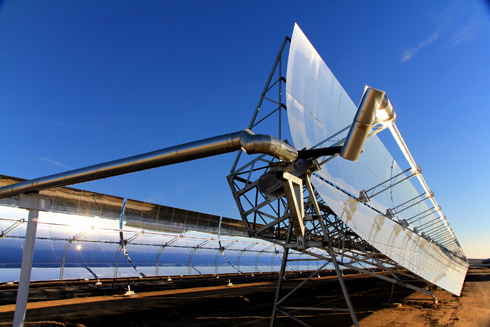
Parabolic trough mirrors
Hydrogen, energy crops and ocean energy divisions
Hydrogen
Abengoa’s hydrogen business is strongly oriented to research and development as a source of expertise enabling it to offer its customers new and better products in its chosen fields. The company’s Seville facilities therefore include a Fuel Cell Testing and Characterization and Advanced Hydrogen Technologies Laboratory. Designed by in-house technical specialists, the laboratory is equipped with gas pressure storage systems and hydrogen storage systems based on various technologies.
In addition to its internal activities, Abengoa is a key player in the hydrogen and fuel cell market in Spain and internationally, favoring synergies among industry players and the spread of this breed of new technologies. The company is currently acting as president of the Spanish Hydrogen Association (AeH2), president of the Spanish Technological Platform for Hydrogen Technologies and Fuel Cells (PTE-HPC), and vice president of the Spanish Fuel Cell Association (Appice). In addition, it is a founding member of the Industry Grouping (NEW-IG) which has launched the Europe-wide Joint Technology Initiative, or JTI, for fuel cells and hydrogen in partnership with the European Commission.
Abengoa has accordingly adopted the “innovation ecosystem” approach: over its history, it has established alliances with technology centers, public research institutes, universities, organizations, and other private enterprises, bearing fruit in the form of cooperation agreements, accords and joint ventures. Highlights include partnerships with centers such as Aicia, Ciemat, Cidetec, Csic, ECN, Inta, Imdea, Fraunhofer, etc. and universities including those of Seville, Huelva, Jaen and Rey Juan Carlos, inter alia.
Finally, another highlight was the fuel cell system installed at Campus Palmas Altas in 2010 and used throughout 2011 as a test bench. The system consists of a facility at the gateway to the campus where the power generated by a large photovoltaic panel over the course of the day feeds the electrolyzer, which converts demineralized water into hydrogen. The gas thus produced is stored for future use feeding a fuel cell system.
Energy crops
Abengoa has created a new business unit based on over 15 years’ experience in the forest biomass sector in Uruguay. Activities over these past few years have focused on:
- Harvesting and forest loading of lumber.
- Supply of biomass for industrial energy.
- Forest logistics: beach operation, loading and transport.
The start of the energy plantations venture has been followed by the following activities:
- Energy crop research, development and innovation.
- Biomass base access (biomass and land).
- Development of biomass processing industries.
The unit has the following projects underway:
- Development of energy crops in Uruguay to support the biomass required for the Alur 6MW cogeneration plant.
- Development of a pellet production plant in Uruguay with capacity for 2000 kt per year and a 10 megawatt cogeneration option.
Ocean energy
The ocean energy business is currently structured into three activities:
- Research and development, in which technology is developed via a range of programs and alliances.
- Engineering, where the capabilities and know-how are being developed to undertake EPC ocean energy farm projects and related offshore work in the near future.
- Development, in which future energy farms are set in motion.
Research and development projects carried out in 2011 include:
- Tecoagua project. Cenit project implemented in cooperation with the Canary Islands Technology Institute and Canal Isabel II, among others, and the University of Granada. The project concerns the design, development and construction of an oscillating water column model that will generate electricity to power a desalination plant. At present, the project works with a scale model at the trial phase in the tank installed at CEAMA in Granada. The technical and economic viability of scaling up the model is under analysis.
- Genera project. An internal investment project to cooperate on the development of point absorbers with Irish technology firm Wavebob. The partnership is working together on the mechanical design of the wave-driven generator of the pre-commercial prototype and on future generation design analysis.
- Orecca project. Off-shore Renewable Energy Conversion platforms Coordination Action is a dissemination project within the Seventh Framework Program underway in partnership with over 25 different entities, including European universities and companies such as ENEL and IT Power. The aim is to create a working framework for knowledge-sharing and to develop a roadmap for research in the offshore renewable energy field. Project members have been directly involved in analyzing the existing legislative and environmental framework, assessing national policies and identifying existing investment opportunities.
- Sowfia project. Streamlining of Ocean Wave Farms Impact Assessment is a dissemination project within the Seventh Framework Program underway in partnership with several European universities and leading ocean energy institutions such as the Wave Energy Centre and European Ocean Energy. Project members are involved in identifying barriers and accelerators facing the development of wave-driven generator farms in Europe, and lead a Europe-wide workshop to share knowledge and analysis of the present state of the existing technology.
- Ecoboya project. This partnership with the compound materials department of the University of Cadiz aims to design, build and test a current generator and fuel cell to power a telemetry buoy in the Port of Seville. Initial analysis is underway of buoy-wave interaction for various sites in order to predict behavior as required for the subsequent design of the anchoring system.

Bioethanol plant in Teixiero-Curtis, La Coruña
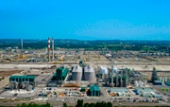
Bioethanol plant in Lacq, Pau, France
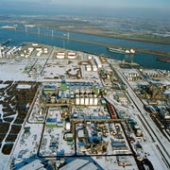
Bioethanol plant at the Europoort, Rotterdam, Holland

Biomass-to-bioethanol plant in Babilafuente, Salamanca

Bioethanol plant in Colwich, Kansas
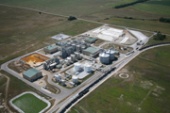
Bioethanol plant in Ravenna, Nebraska
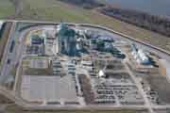
Bioethanol plant in Madison, Illinois

Bioethanol plant in Pirassununga, São Paulo, Brazil

Bioethanol plant in São João, Brazil

Sugar production plant in Santo Antônio de Posse, São Paulo, Brazil

Salt obtained as a product of the salt slag recycling process in Lünen (Germany)

Steel flakes recovered in the Landskrona facility, Sweden
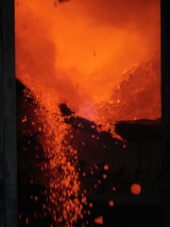
Slag drop in the Waelz furnace in Erandio (Spain)
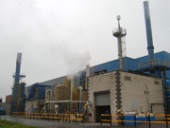
Salt slags treatment facility in the UK
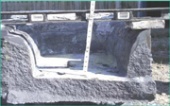
Spent potlining (SPL)

Ingot mold train

Abengoa employees performing soil decontamination work
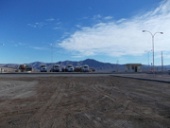
Facilities in Antofagasta, Chile
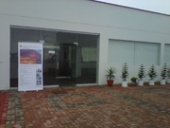
Laboratories in Peru
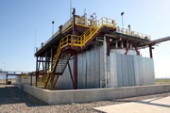
Molten salts (TES) (Seville, Spain)
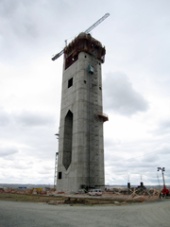
Solugas (Seville, Spain)

PS10 heliostats
© 2011 Abengoa. All rights reserved
